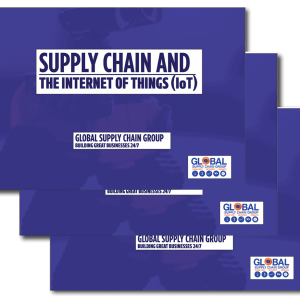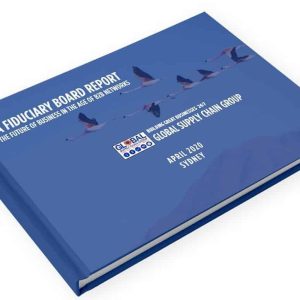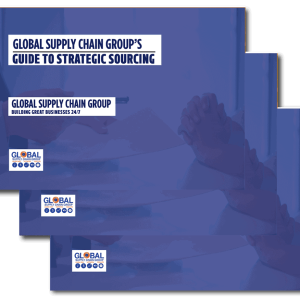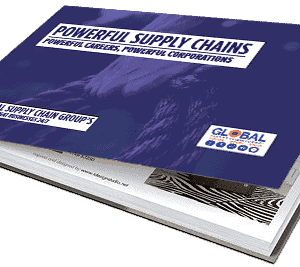Description
Global Supply Chain Group’s Guide to The Latest Trade-Tech
Letters of Credit (LCs or LoCs) Have a Glorious And Long History
In the days of camel trains carrying spices from the east to consumption centres around the known world, dangers were far more significant than they are today. Traders and their bankers worked out elaborate systems of supply chain financial flow to succeed in their endeavours. The rewards were commensurate with the risks, and big markups of up to 24000% per cent were routine on most transactions.
At some point in medieval history, the legal form of these supply chain financial flow systems coalesced into a formal Letter of Credit (LoC) system. Since then, it has become the principal instrument of international trade and commerce.
Discontent with Letters of Credit was Already Growing At the Dawn of The Digital Age
It is relatively easy to write an entire report on what is a Letter of Credit and how does it work, and its pros and cons. The International Chamber of Commerce (ICC) and many legal and finance firms have already written enough to cover the first two parts of this topic. A big pro of LOC is that it is time tested and has a lot of court case history.
If you are a practical business person involved in international trade and commerce on a daily basis, you will already have noted many of the deficiencies of the Letter of Credit that you have to accept because of lack of reliable alternatives currently. The biggest drawback of a letter of credit is the time it takes on both ends to give effect to the intention of the transaction. In the days of instant communications, it is now unacceptable for many traders to wait to effect transactions only during the banking hours – taking several banking days to move money at a glacial pace at which most banks continue to move. The extraordinary power that the bankers assume as part of this transaction – all on the basis of the funds owned by the buyers or sellers can also appear daunting to many traders. Possibility of the bank default and fraud is always there as well. No wonder many large corporations decide to do away with the need for LOCs entirely by putting trust in their customers and suppliers instead.
Technology is Challenging Out of Date International Trade Practices – People are Saying There has to be A Better Way
What applies to Letters of Credit, also applies to several other international trade instruments such as Bills of Lading, Notice of Readiness, Advance Shipping Notice, Statement of Facts, Ship Surveys, and Notice of Readiness etc. All these instruments were created in days of slow communication and limited international reach of most traders.
In the days of 24/7 instant communications and globalised around the clock supply chains, many of these instruments now hinder, rather than facilitate the trade-flow. No doubt the practitioners have created workarounds where paperwork is merely a formality that gets done the last to cover the assumptions after the deal is done.
And, that is why forward-looking people in global supply chains continue to look for a better way.
Now, for the first in the 400 years letter of credit and its ancillary instruments are being challenged
Once in centuries, a big trend comes along due to political, cultural or technological upheaval. It changes everything. Trade-tech is on the verge of one such upheaval at this point in history. The march of digitisation has reached international trade.
Whether it is a bill of lading (B/L), or a LOC, or a NOR, or an AN, its digital equivalent is likely to bring authenticity back to giving effect to the original intention of the contract. Yet neither the technical aspects nor legal aspects of managing the new technologies are without their challenges. After all, that is the reason why they have not succeeded thus far.
So, What Can You Expect in Global Supply Chain Group’s Guide to The Latest Trade-Tech
You can expect a summary of the latest trade-tech and trade digitisation instruments as they emerge on the horizon and our perspective on their usefulness from a practical perspective. While we do not ever provide any legal or financial advice in any of our reports and guides, we can outline potentially useful information that practical business people and executives must take into account when they make decisions pertaining to their business strategy and supply chain.
Who is this Guide Meant For?
CEOs, Supply Chain Executives, Boards, Bankers, Academics, Thinkers, International trade experts and anybody else who might be expected to have an opinion or strategy on the digitisation of international trade practices.
Winners Tend To Have Superior Information
I wish I could say that this guide will reduce your international trade cost by up to xx%, or reduce the time taken to effect the paperwork by yy%. But that is not true. There are currently many pitfalls between the availability of a particular technology, and being able to realise tangible benefits that flow straight into your bottom-line. The choice of technology and platform is perhaps the most important one.
This guide presents Global Supply Chain Group’s best thinking based on over 35 years of experience in international trade and global supply chains. It outlines the opportunities, scans the technologies on the horizon, and notes vital pros and cons. Presents a view on what is possible in what time frame and what action to take today.
The State of The Art
Think of this guide as a comprehensive scan of the current state of affairs on trade-tech and a summary of GSCG’s analysis and prognosis. Another way to think of it is that this is the report you might adapt and present to your board of directors if they suddenly asked you to prepare for them your report on the digitisation on the international supply chain. Now you will not have to pay a consulting firm hundreds of thousands of dollars to prepare a customised report for you because you can easily customise this material for your board of directors.
Be prepared for the future
What can you do with all this information? For a starter, when the future is changing right in front of your eyes, it is necessary to be prepared for the future with the right information and action plans and contingencies. This guide will help you be in that position.
take the right action in a balanced manner when appropriate
While you may decide to hold off significant concrete steps right now because of uncertainty about the technologies, or you may choose to take a small position by dipping your toes in the water, you still need to have a view on what action you will eventually take, and in what time frame. The future will arrive sooner or later. There is no point getting caught up with a surprise.
Save big on international trade
High friction and costs in international trade chafe at everyone. With digitisation and appropriate technologies, sooner rather than later, these costs are bound to come down – just as they are coming down in many other sectors. Think of share trading – once you would pay thousands of dollars to your stockbroker for advice and trade execution that you can do in seconds online today.
Save time
The wastage of time is the most common grievance in the international trade-related paperwork today. No doubt the outdated processes and instruments almost as unsatisfactory as the use of a bank cheque, in the days of electronic funds transfers.
Enhanced supply chain security, integrity and governance
New trade-tech, more in line with the technological progression will slowly align itself with the advanced thought leadership on supply chain governance, supply chain integrity and security. Absence of such alignment will spell doom for the technologies that do not develop functionalities that proactively boost supply chain governance and integrity.
Move in step with time
As the times change, you need to move in step. The only way to do so is to know the paths clearly and watch out for danger zones. In the past, many companies have made massive technological missteps as the senior executives and boards were swayed by one vendor, or other. However, now the companies are a lot more sophisticated and do due diligence in their continual data gathering before big decisions such as international trade financing and technologies.
know the pros and cons of your trade-tech options
Life would have been uncomplicated, albeit dull, if there was just one option and everyone was forced to follow it. There is an abundance of partly ready part solutions and some near ready, near full solutions. No solution will fit every need of every company – no matter how hard they try.
Which ones look promising, and which ones are best to avoid for your company?
Be actively involved in shaping the technologies, agendas and regulatory frameworks
This step is critical – the standards are emerging and the winners will be part of the core group that sets the standards. If you cannot shape the standards, at least be part of the group that knows and benefits first from them.
If you are already actively involved – you get the full picture and an independent view. If you are not yet involved, you get an impetus to get involved at an appropriate time.
be the most informed person in the room
Have an informed opinion on something most people do not even know much about. When the executive team and the board are discussing this topic, have all the information at your disposal. Impress your peers with your in-depth knowledge on the subject that most people find difficult to understand.
Innovate
Build related products – enhance your profitability. Use the knowledge to gain an edge in international trade – with faster deals, more secure deals, more profits on the deals, more deals in the same time frame.
If you want more information on this report – click here…





Reviews
There are no reviews yet.